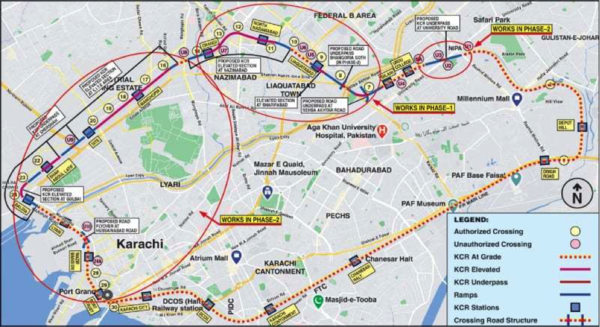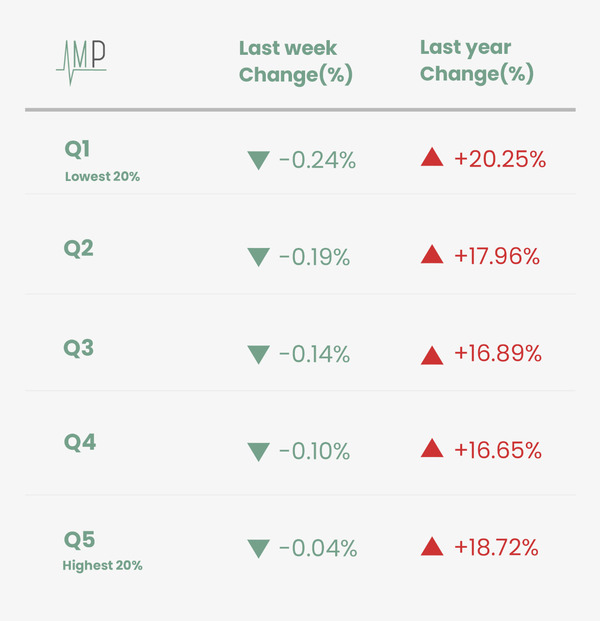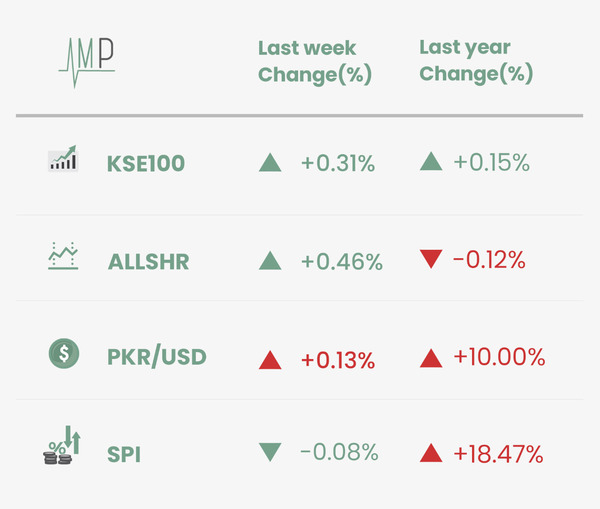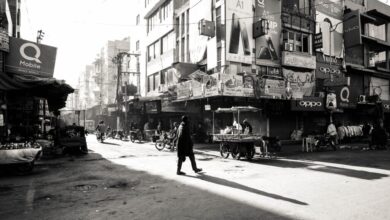The year is 1999. Wasim Akram is bowling toe-crushing yorkers to carry Pakistan to the World Cup final. Y2K conspiracy theories are enveloping the world like wildfire. And somewhere in Karachi, the last Circular Railway train is being decommissioned as the KCR wraps up operations. Fast forward to 2022, Wasim Akram is selling Ariel detergent, conspiracy theorists have a new target in the form of Covid, and perhaps most surprisingly, the Karachi Circular Railway is making a return.
While the return of the KCR has been under discussion for quite some time, privately, many considered its revival unlikely due to the massive cost and effort that would be required to get the railway functioning again. It needed new rail tracks, new carriages, and even a partly new route. Where exactly that money was going to come from was unclear, until earlier this week.
The route for the Karachi Circular Railway

Source: Dawn.com
On Thursday, the Ministry of Planning’s Central Development Working Party approved PKR 273 billion in funding for the KCR, with construction expected to be completed by 2025. The railway will have 30 stations, and is expected to have a daily ridership of 457,000. For Karachiites who have been starved of public transport for decades, the news seems scarcely believable.
There is a downside to this construction however, and that is the estimated 20,000 households who are likely to become homeless due to their residence in informal settlements along the railway tracks. Under law, these households are entitled to financial compensation. In reality, 1,100 households that lost their homes in KCR anti-encroachment operations in 2019 have yet to be financially compensated despite a Supreme Court order to that effect. In Pakistan, development always comes at a cost.
KSE-100 rose marginally this week, due to higher-than-expected dividend announcements from some companies. PKR depreciated slightly this week, as the release of January’s trade statistics highlighted the country’s persistent trade deficit.

The annual change in Sensitive Price Index fell to 18.47% vs. 19.53% last week. The poorest of the country (Q1) were disproportionately affected with a change of 20.25% vs. 18.72% for Q5. On a weekly basis, prices fell for all quintiles by 0.08%.
Increase in prices of Chicken (+5.65%) and Garlic (+7.03%) contributed to weekly inflation. A fall in the price of Tomatoes (-14.9%), Eggs (-2.05%) and Sugar (-1.43%) helped moderate inflation this week.
What Else We’re Reading (Local)
- Pakistan’s gaming industry is booming, drawing the eyes of VCs from around the world, in a sector worth USD 200 billion globally. (Profit)
- Drinks-manufacturer Shezan Services has taken Lahore-based Shezan Bakers to court for trademark infringement. Will the Supreme Court squash Shezan Services’ appeal, or make minced meat of Shezan Bakers’ arguments? (Dawn)
What Else We’re Reading (International)
- Despite over half of Afghanistan’s population facing starvation, US President Biden has decided to hand over USD 3.5 billion of the previous Afghan government’s foreign reserves to American victims of terrorism. (Bloomberg)
- Share prices of Indian online behemoths such as Zomato and Paytm have tumbled in recent months, as they struggle to translate revenue and growth into profits. (FT)






